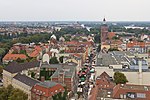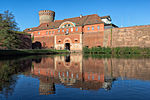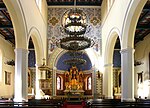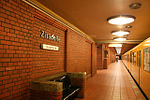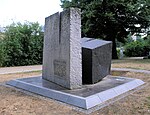Hakenfelde Prison
Buildings and structures in BerlinPrison stubsPrisons in Germany

Hakenfelde Prison (German: Justizvollzugsanstalt Hakenfelde, JVA Hakenfelde) is a low-security prison in Hakenfelde in Berlin, operated by the State of Berlin Department of Corrections. It was opened on 1 March 1978 in what was then West Berlin, and was originally a branch of Düppel Prison. It became an independent correctional institution in 1991. Between 1995 and 1998, its old barracks were replaced by a modern prison building. It has a capacity of 908 prisoners. Several former communist leaders of East Germany served their sentences there, including Egon Krenz, Günter Schabowski, and Heinz Keßler.
Excerpt from the Wikipedia article Hakenfelde Prison (License: CC BY-SA 3.0, Authors, Images).Hakenfelde Prison
Niederneuendorfer Allee, Berlin Hakenfelde
Geographical coordinates (GPS) Address Nearby Places Show on map
Geographical coordinates (GPS)
| Latitude | Longitude |
|---|---|
| N 52.569166666667 ° | E 13.211388888889 ° |
Address
Justizvollzugsanstalt des offenen Vollzugs, JVA Hakenfelde
Niederneuendorfer Allee
13587 Berlin, Hakenfelde
Germany
Open on Google Maps

